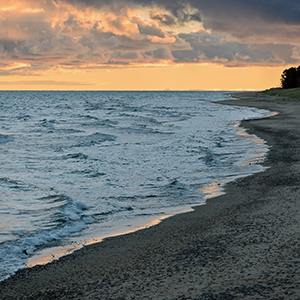Dataset of benthic copepods in the littoral zones of Lake Maggiore

Submitted: 24 February 2023
Accepted: 15 May 2023
Published: 15 June 2023
Accepted: 15 May 2023
Abstract Views: 387
PDF: 129
HTML: 9
HTML: 9
Publisher's note
All claims expressed in this article are solely those of the authors and do not necessarily represent those of their affiliated organizations, or those of the publisher, the editors and the reviewers. Any product that may be evaluated in this article or claim that may be made by its manufacturer is not guaranteed or endorsed by the publisher.
All claims expressed in this article are solely those of the authors and do not necessarily represent those of their affiliated organizations, or those of the publisher, the editors and the reviewers. Any product that may be evaluated in this article or claim that may be made by its manufacturer is not guaranteed or endorsed by the publisher.
Similar Articles
- Esther Sebastian-Gonzalez, Joan Navarro, José Antonio Sanchez-Zapata, Francisco Botella, Antonio Delgado, Water quality and avian inputs as sources of isotopic variability in aquatic macrophytes and macroinvertebrates , Journal of Limnology: Vol. 71 No. 1 (2012)
- Maria Anton-Pardo, Xavier Armengol, Raquel Ortells, Zooplankton biodiversity and community structure vary along spatiotemporal environmental gradients in restored peridunal ponds , Journal of Limnology: Vol. 75 No. 1 (2016)
- Krzysztof Pleskot, Mónika Tóth, Karina Apolinarska, Distribution of subfossil chironomids (Diptera, Chironomidae) along a water depth gradient in the shallow Lake Spore, northern Poland , Journal of Limnology: Vol. 78 No. 3 (2019)
- Carolina Bustamante-Gil, Eduardo Amat, Andrés Boltovskoy, John J. Ramírez-Restrepo, The first floristic study of freshwater dinoflagellates (Dinophyceae) in Colombia , Journal of Limnology: Vol. 81 (2022)
- Keqiang Shao, Tunasheng Ba, Boqiang Qin, Jianying Chao, Guang Gao, The prevalence of Atribacteria affiliated with JS1 in the sediment core of Lake Sayram, the largest alpine lake, China , Journal of Limnology: Vol. 82 (2023)
- Chaichat Boonyanusith, Anton Brancelj, La-orsri Sanoamuang, First representatives of the genus Fierscyclops Karanovic, 2004 (Copepoda, Cyclopidae) from South East Asia , Journal of Limnology: Vol. 72 No. s2 (2013): Freshwater Invertebrates of Southeast Asia
- Marina Manca, Michela Rogora, Nico Salmaso, Inter-annual climate variability and zooplankton: applying teleconnection indices to two deep subalpine lakes in Italy , Journal of Limnology: Vol. 74 No. 1 (2015)
- Richard W. Merritt, Stefano Fenoglio, Kenneth W. Cummins, Promoting a functional macroinvertebrate approach in the biomonitoring of Italian lotic systems , Journal of Limnology: Vol. 76 No. s1 (2017): Aquatic biomonitoring: Lessons from the past, challenges for the future
- Satu Estlander, Jukka Horppila, Mikko Olin, Leena Nurminen, Should I stay or should I go? The diurnal behaviour of plant-attached zooplankton in lakes with different water transparency , Journal of Limnology: Vol. 76 No. 2 (2017)
- Renato BAUDO, Biological monitoring of aquatic ecosystems in Italy , Journal of Limnology: Vol. 60 No. s1 (2001): Scientific and legal aspects of biological monitoring in freshwater
<< < 34 35 36 37 38 39 40 41 42 43 > >>
You may also start an advanced similarity search for this article.

 https://doi.org/10.4081/jlimnol.2022.2130
https://doi.org/10.4081/jlimnol.2022.2130






